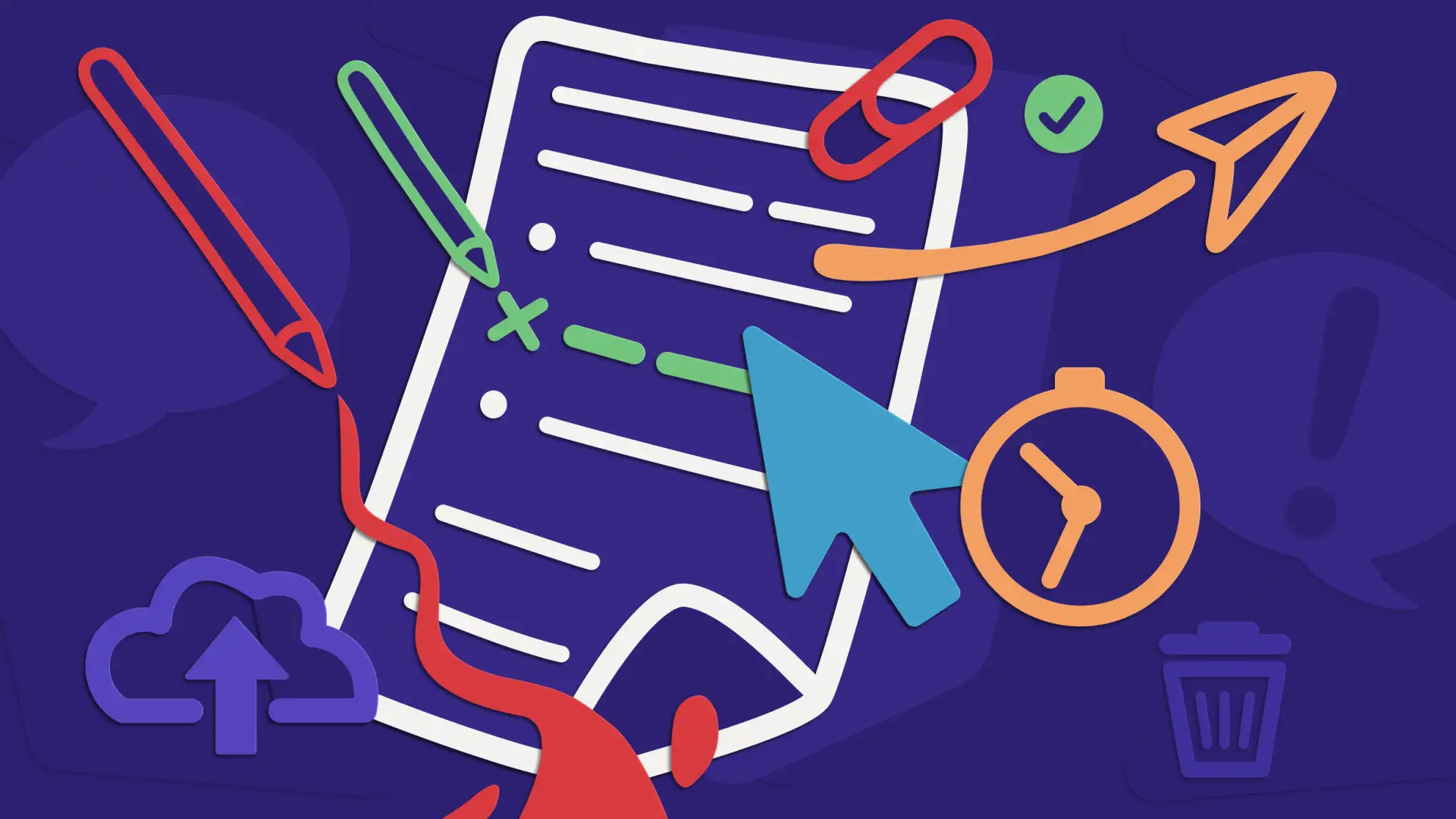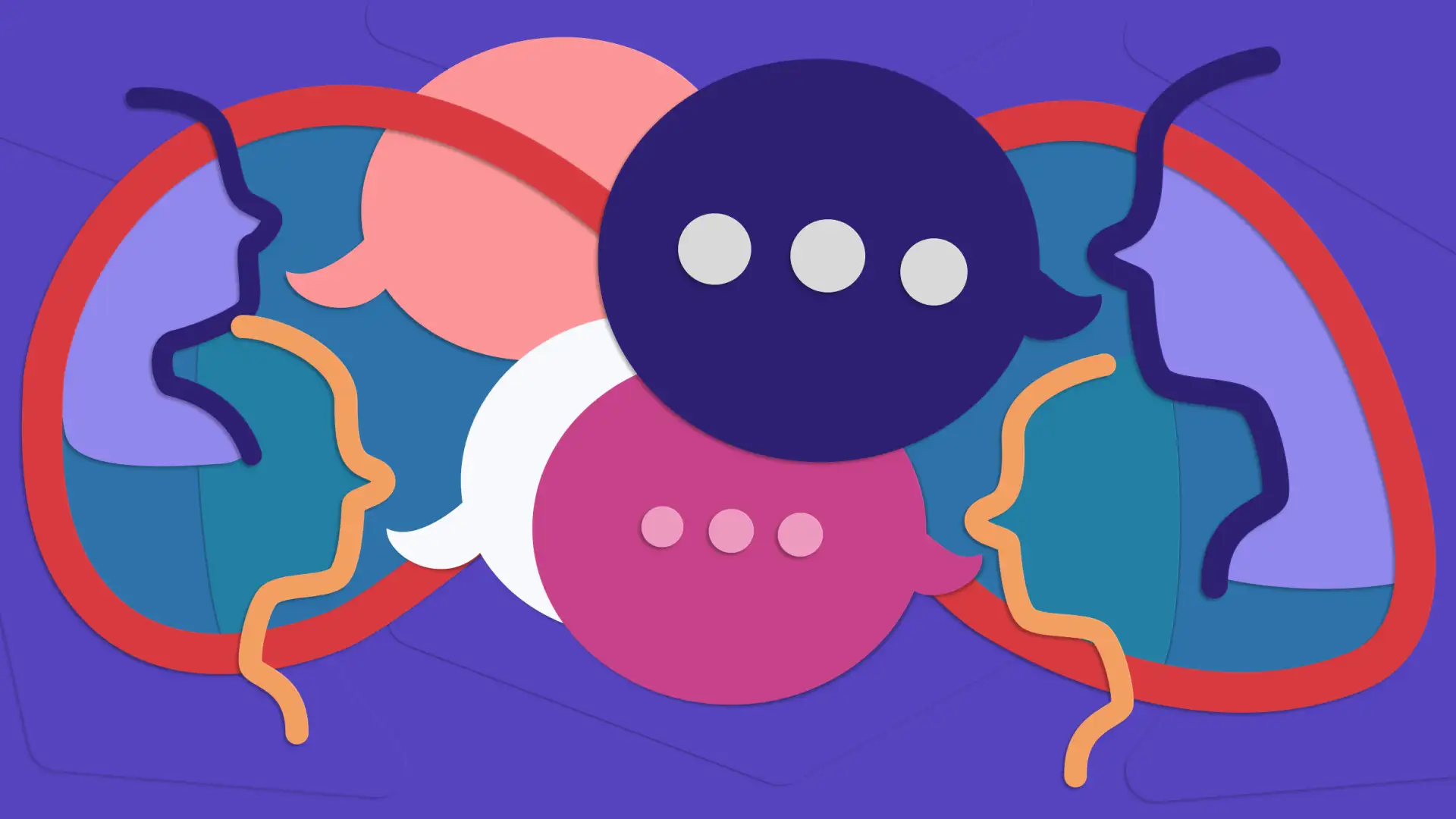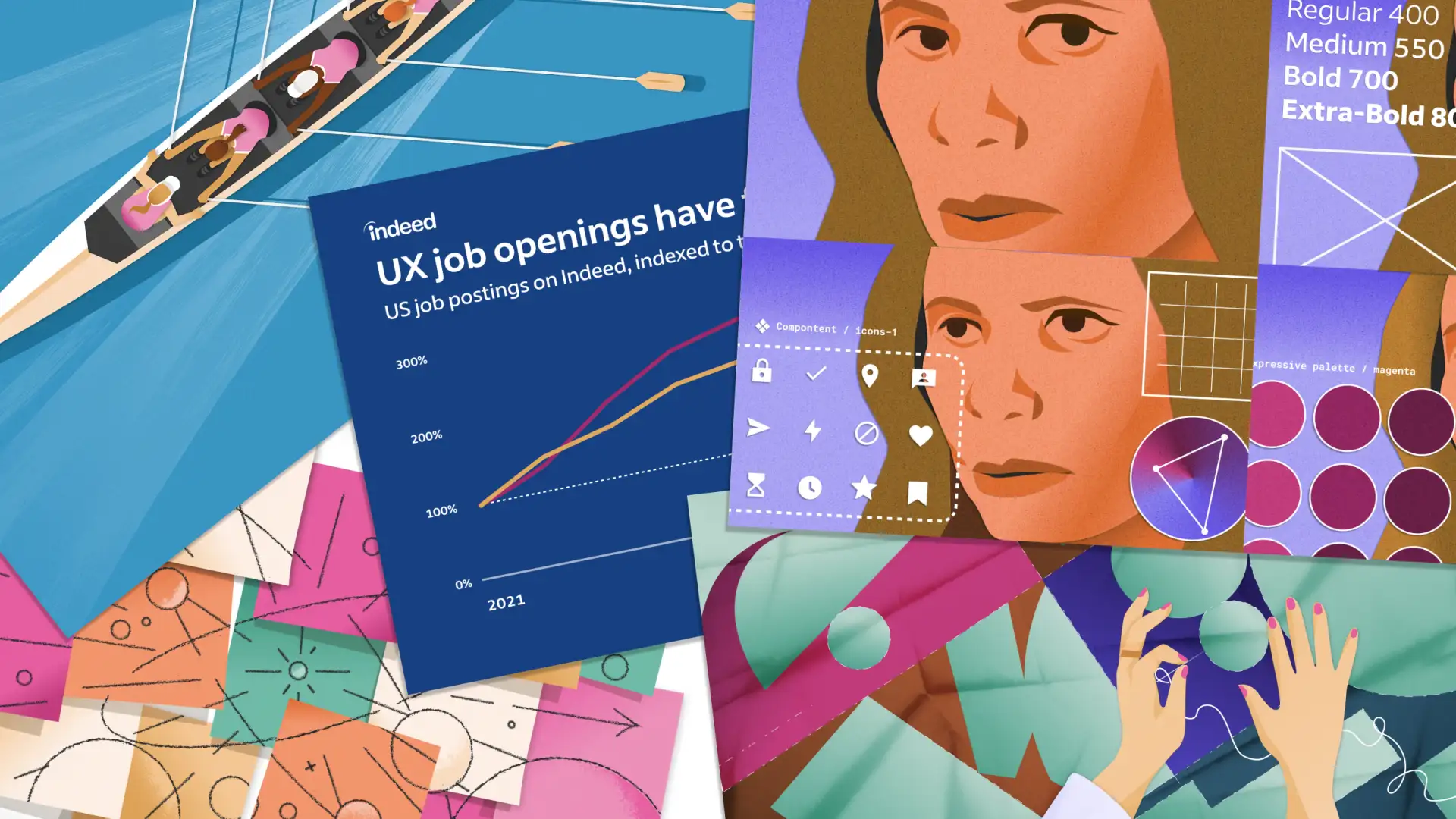In October 2022, I hopped on a plane from Virginia to Seattle to attend Button, the world’s leading content design conference. That year — as in most years — it featured several conversations that focused on demonstrating the value of content design and content designers’ struggles to obtain the organizational support they need to thrive. In one especially memorable talk, Google’s head of UX Content Strategy, Relly Annett-Baker, assured attendees that “We do not need to ask permission to do our job.”
This made me wonder: If content designers feel excluded and powerless, how do their partners see our contributions? What user experience do stakeholders have when working with content designers?
I couldn’t answer this question for the entire industry, but I could ask my own co-workers. So I did.
At Indeed, we’re fortunate to staff a relatively mature UX content design team of about fifty practitioners. To learn more, I surveyed the folks who work with these content practitioners most closely.
At the end, I was surprised to see how positive teammates’ experiences with content designers really were.
Surveying our teammates about the value of content design
I surveyed 61 Indeed employees from three disciplines: product management, UX design, and UX research. (Incidentally, these are the same disciplines the UX Content Collective found in their 2023 survey were most likely to collaborate with content designers.) Respondents were anonymous, unless they chose to identify themselves.
I received responses from:
- 33 people with UX design titles
- 15 people with product management titles
- 13 people with UX research titles
I asked these collaborators how having an Indeed UX content designer on the team affected four dimensions of their work:
- The speed with which they could deliver a solution
- The quality of solutions
- The likelihood of reaching goals
- Team morale
For each dimension, I asked respondents to rate their experience of working with a content designer on a 5-point scale.
I also wanted to collect stories of content design collaboration to learn what works and what doesn’t. So I included a field for free text responses, and I contacted some willing respondents for follow-up interviews.
Content design helps teams deliver better products
On average, here’s what Indeed employees said about content designers in the survey:
- Collaborators deliver much higher quality solutions when they partner with a content designer.
- Collaborators experience higher morale when working with a content designer.
- Collaborators were somewhat more likely to attain goals and OKRs when working with content designers.
- Collaborators had mixed opinions about content design’s impact on speed.
Let’s take a closer look at the data.
Content designers help deliver high-quality solutions
Overall, solution quality is the area in which content designers deliver the most value.
- 69% of respondents gave a rating of 5, indicating that they deliver much higher quality work with content design than without.
- Another 21.4% of respondents gave a rating of 4, indicating that working with content design helps them deliver solutions with somewhat higher quality.
- 6.9% (4 respondents) gave a neutral rating.
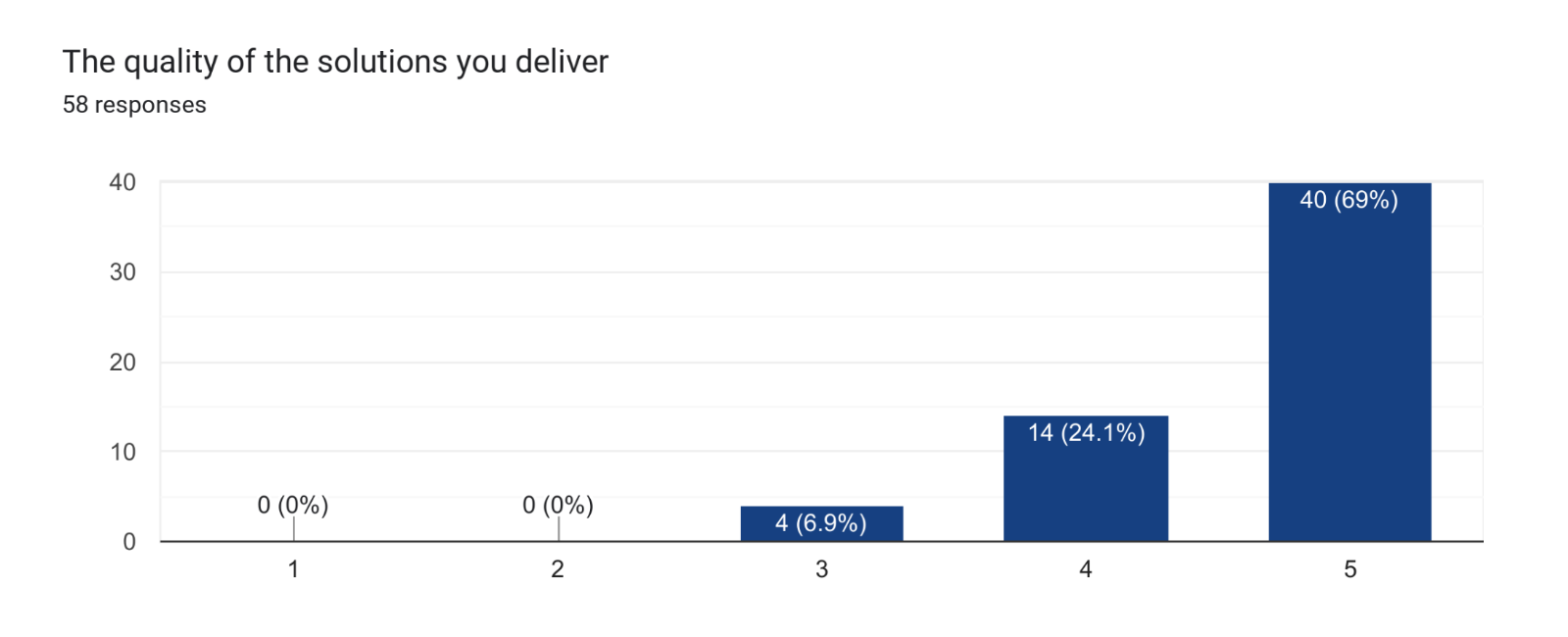
When asked how content designers help deliver better quality, UX Designer Colin Robins said that having a content design collaborator helps him think more holistically about the user’s experience:
“As designers, we can get very myopic. We need to solve this one problem in this one flow for this one thing.
“For me, working with a content designer helps me understand: how can this design element apply, where should it apply, and how does it relate to other things? A UXCD helps me understand how information fits into the broader ecosystem.”
Audrey Santiago, the product director working on our candidate management experience, agreed:
“Content designers are bringing a better way to think about the architecture of the content and the experience, and they ensure we’re providing consistent copy across the entire experience.”
Content designers help boost team morale
The second highest average rating came in the dimension of team morale:
- 48.3% of respondents gave a rating of 5, indicating that they perceive team morale to be much higher with a content designer on the team than without.
- 29.3% of respondents believed team morale is somewhat higher with content design.
- 20.7% of respondents believe that content design has a neutral impact on team morale.
- 1.7% (1 respondent) reports somewhat lower team morale with content design.
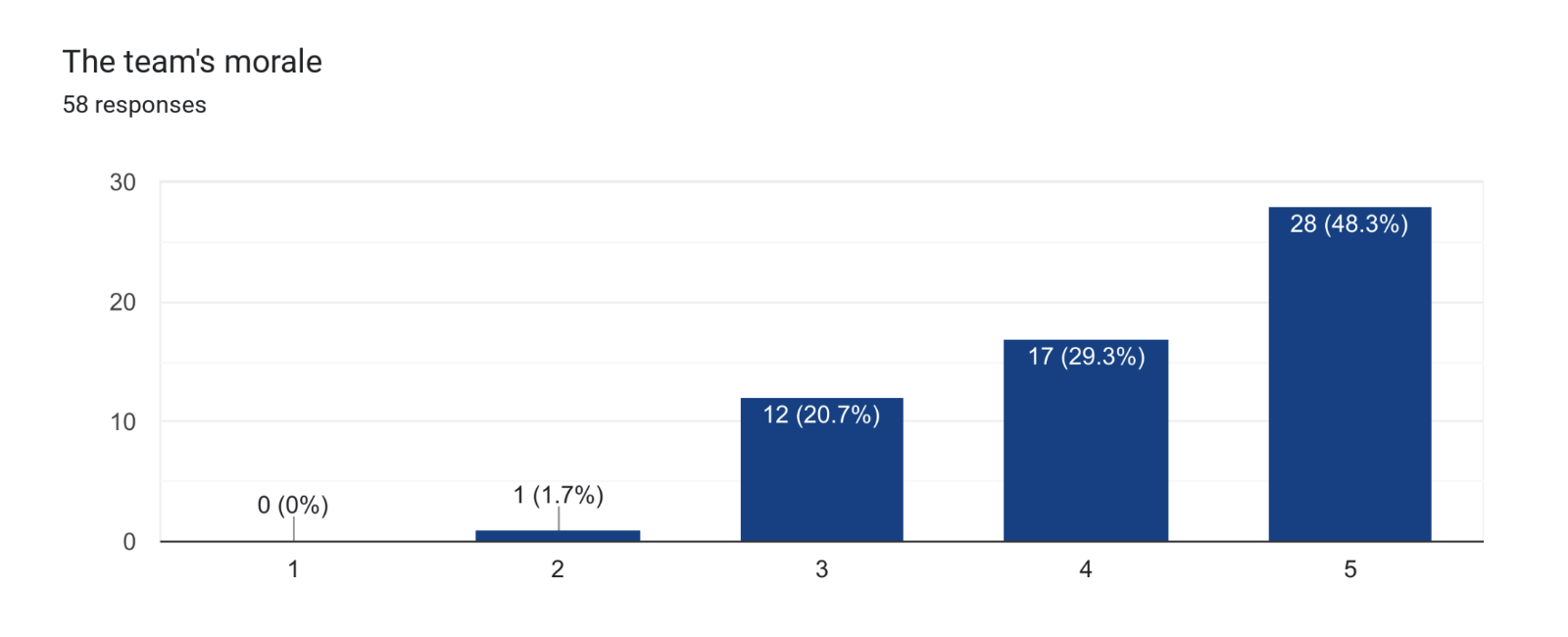
Senior UX Designer Marissa Klymkiw believes that quality and morale are related:
“If you know you’re building something of value, it means more to the team.”
So if content designers help deliver quality solutions, team morale gets a boost.
Content designers help teams to achieve goals
When it comes to achieving team goals, collaborators on average reported that content design has a positive impact:
- The highest percentage of respondents (43.1%) gave a rating of 4, indicating that they were somewhat more likely to achieve their goals with a content designer on the team.
- 34.5% of respondents gave a rating of 5, indicating that they have a “much higher” likelihood of hitting their goals with content design than without.
- 20.7% of respondents gave a neutral rating.
- 1.7% (1 respondent) believed that working with a content designer made the team “much less likely” to achieve its goals.
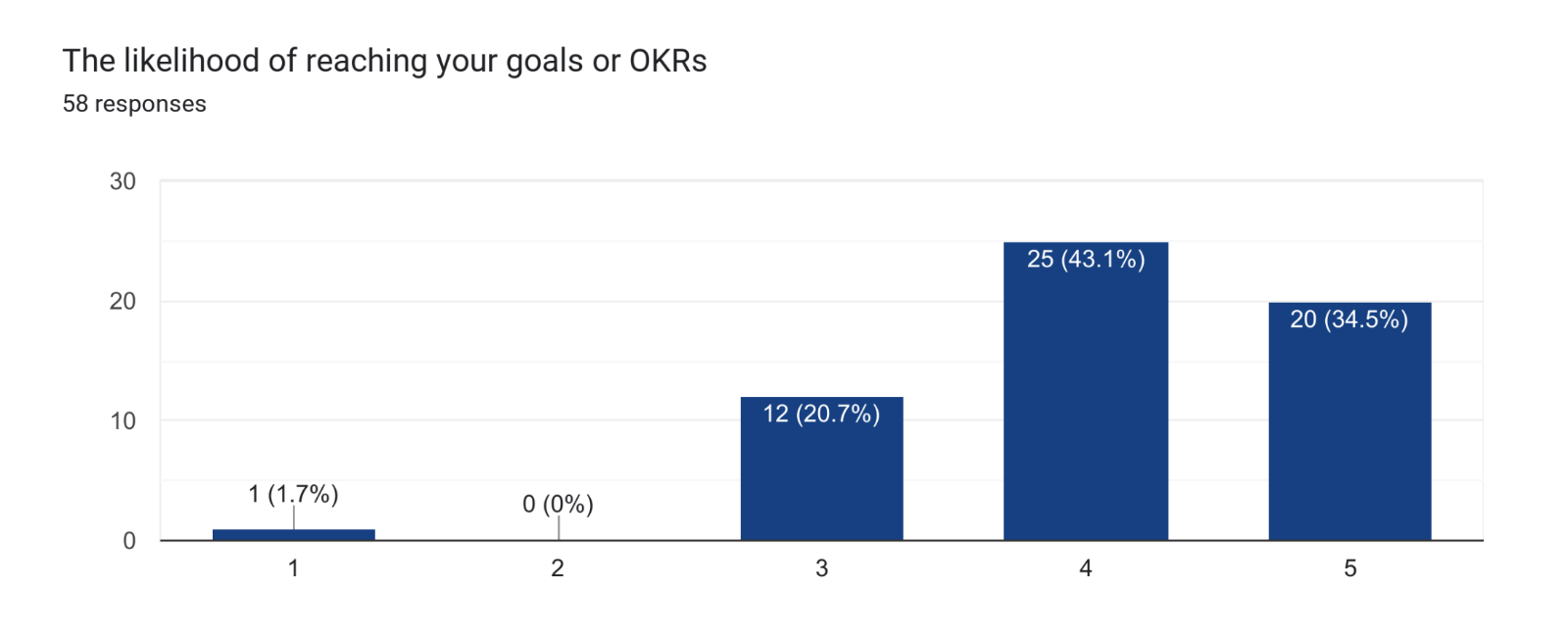
As with morale, this result may be tied to solution quality. When asked whether content design helps her team hit goals, Marissa Klymkiw said:
“I’ve worked with content folks who had very different experiences than a designer — and bring a different viewpoint. So I find they bring new insights to the conversation.”
She believes those new insights help the UX team solve complex problems more effectively. And other respondents agreed.
Content designers may or may not affect how quickly teams work
Of all the dimensions, teams gave “speed” the widest range of ratings:
- The majority of collaborators (41.4%) reported that having a content designer on the team did not change the speed with which they delivered solutions.
- However, 24.1% of respondents believe that having a content designer on the team meant they could deliver a solution “much faster.”
- 22.4% of respondents said a Content Designer enables them to deliver a solution somewhat faster by giving it a rating of 4.
- Notably, 6.6% believe that having a content designer on the team slows them down
- 3.4% report much slower delivery with a content designer on the team.
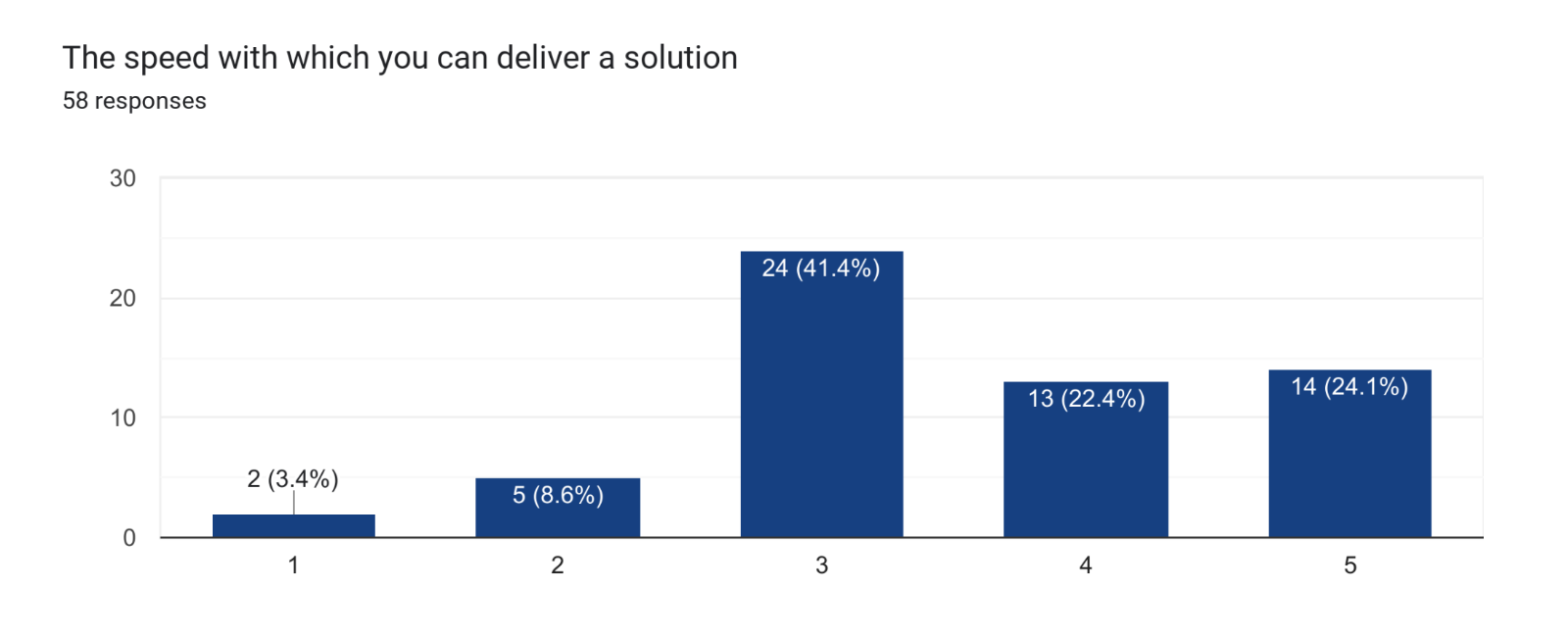
Despite a somewhat lower overall average score in this dimension, some collaborators saw greater speed as an important benefit. For Colin Robins, it was a matter of efficiency and quality:
“A content designer really boosts how quickly you can do something and how well you can do it. I could putter around for weeks and maybe get there, but Chad Garrett (our senior content designer) could come in within an hour and just get it done. And we can move on to something else!”
Audrey Santiago said something similar:
”Not having a content designer on the team would impact our velocity. We would still be debating about copy. Having someone with this glossary in their head, it ends debates much faster.”
Content design has changed the way some teams work
A content designer’s thinking can influence the foundational concepts the team builds the design on, or it can help explain a concept in a clearer way, Audrey Santiago said:
“We learned quickly that even the word ‘interview’ is understood very differently by different employers. Some see an interview as a big commitment. Others think of it as just a quick call. Content designers are helping us determine how we structure and name these important concepts.”
Once teams move beyond foundational concepts, of course, content is still essential. Marissa Klymkiw offered that products essentially consist of content:
“If you don’t have content, do you really know how you’re going to design something? Content’s very critical in — and it kind of is — the experience. Words give users an understanding of what they need to do next. That’s all in the content.”
Breakdown of ratings by discipline
On average, all three disciplines rated content design as delivering value in each of the four dimensions.

As we saw above, on average, all three disciplines gave the highest rating in the area of quality, the second highest in morale, the third highest in OKR attainment, and the lowest in speed.

When we look at how each discipline rated the value of working with content designers across all dimensions, we see that UX researchers reported the most benefit from their collaborations with content designers. UX designers gave the next highest rating, followed by product managers.
Opportunity areas we found
Respondents saw two main areas where their work with content designers could improve: availability and process.
Availability
Even though Indeed currently staffs around fifty content designers, six respondents commented that they want more content design teammates. This is due to bottlenecks caused by too few content designers distributing their time across several products. As a result, a product sometimes must wait its turn to receive a content designer’s attention, causing delays in delivery.
Process
Nine respondents mentioned that they want to know how better to work with content designers. They want clearer answers to questions like:
- What does a content designer do?
- What deliverables do they create?
- When and how should a content designer be brought into the design process?
- What is the breakdown of roles and responsibilities between content designers and their teammates?
One respondent mentioned that creating a RACI at the beginning of a project could help provide these answers — an idea reminiscent of Jan Rojcek’s collaboration framework.
Moving from advocacy to valued partnerships
These survey findings tell me a lot.
For one thing, they tell me that content designers are past the point of asking permission to do their jobs, to use Relly Annett-Baker’s words. (Or they are at Indeed, at least.) Content designers don’t have to ask to be on the team. By and large, cross-functional partners see big benefits to working with content designers. Some partners are eager to advocate for content design themselves.
This is great news. Since content designers at Indeed don’t need to spend as much time advocating for their practice, they can help partners get even more value out of them. This might mean thinking more about how they can propose new content-focused methods for design and research or facilitating team discussions about roles and responsibilities.
Of course, my survey findings are specific to Indeed and may not apply to your workplace. But maybe they’ll give you some ideas about growing content designers’ partnerships in your organization. Instead of telling folks about the value of content design, jumping in and doing the work — with or without permission — might more effectively demonstrate your value than talking ever could.



